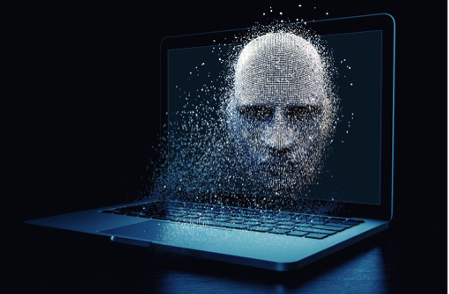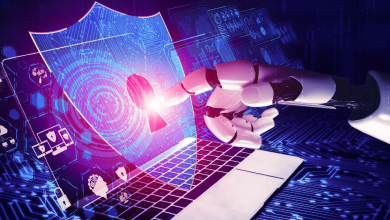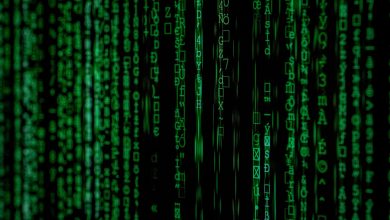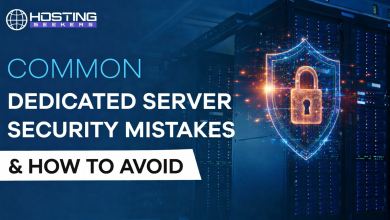
If you’re a cybersecurity professional, artificial intelligence is quickly becoming both your biggest blessing and your biggest curse. On the one hand, all of these generative models and lightning-fast algorithms are helping attackers craft phishing emails so convincing that even security-aware employees are falling for them, tailor malware on the fly, and even clone a CEO’s voice in seconds.
On the other hand, those very same technologies are proving to be a massive help for cybersecurity, enabling analysts to monitor millions of signals in real-time, predict an intrusion before it escalates too far, and eliminate the bad actors faster than any human SOC ever could. You could say it’s the ultimate paradox. And the smarter our code becomes, the sharper the double-edged sword.
This blog unpacks that tension. We’ll examine how AI supercharges cybercrime and also highlight its growing power in defense. Whichever way you look at it, it turns out that we are already in the middle of an AI-driven arms race, and both organizations and everyday users need to know the steps they can take to stay one step ahead.
The Dark Side: How AI Amplifies Security Threats
Supercharged Cyber-Attacks
AI-driven phishing kits now scrape your social profiles, test a dozen subject lines, and adapt the email’s tone mid-conversation, boosting click-through rates dramatically.
Deepfake engines have already matured to the point where an executive’s cloned voice can ring finance and demand a “routine” wire transfer. And while this may sound like it’s out of a science fiction movie, these attacks are already taking place. This is precisely what happened to Wiz employees in 2024.
AI-powered scanning tools are automatically hunting for weaknesses across the entire internet. These systems can scan millions of websites and networks, identify security vulnerabilities, and launch attacks without human intervention. A scary proposition.
The Democratization of Hacking
Not too long ago, hacking was seen as something accessible only to highly skilled computer engineers (or those with nation-state backing and resources). Those days are gone.
Copy-and-paste prompt recipes now let almost anyone generate polymorphic malware, build deepfake videos, or automate credential stuffing. The barriers to entry continue to fall as open-source AI models proliferate.
New Attack Vectors
One of the most malicious tricks is called “adversarial attacks.” Imagine someone placing a tiny, almost invisible sticker on a stop sign that causes a self-driving car to misidentify it as a speed limit sign. That’s basically what hackers can do to AI systems. They add small changes to images, sounds, or text that are nearly impossible for humans to notice, but completely fool the AI.
Then there’s the misinformation problem. AI can now create fake social media profiles that look completely real (fake photos, fake personalities, fake histories).
These artificial influencers can flood social media with convincing but completely false information about anything from political candidates to stock prices. This is a significant problem, as it can be carried out on a massive scale, creating thousands of fake accounts that all push the same false narrative, making it seem like everyone believes something that isn’t true.
The Bright Side: AI as A Digital Guardian
Threat Detection And Response
Machine-learning-powered analytics crunch a massive amount of data collected from endpoints, cloud logs, and network flows to surface even the most minor anomalies that a human analyst would be unable to spot.
This significantly reduces the level of inaccuracies while cutting response times. And since these models learn continuously, they can flag new threat patterns just minutes after they first appear, rather than weeks later in a signature update. Predictive threat-intel engines even map how a campaign is likely to evolve, giving security teams early warning.
Automated Defense Systems
Modern AI-powered security systems not only detect threats but also respond to them automatically. When AI detects suspicious behavior, it can immediately isolate affected systems, block suspicious traffic, and initiate remediation processes. This happens in milliseconds, not the minutes or hours it might take a human to respond.
The beauty of this approach is that it levels the playing field. While attackers might use AI to launch rapid, automated attacks, defenders can use AI to mount equally rapid, automated responses.
Network security services have also evolved with AI and can protect your entire network against sophisticated cyberattacks, regardless of the location, device, or application involved. Whether your team is working from the office, from home, or a coffee shop halfway around the world, AI-powered security can adapt to provide consistent protection.
Cloud-based AI security solutions also offer a significant advantage because they can instantly share threat intelligence across all their customers. When one organization faces a new type of attack, the AI learns from that experience and immediately applies that knowledge to protect everyone else.
Enhanced Authentication And Access Control.
AI-driven biometrics now analyze micro-movements in your face or typing rhythm, dramatically reducing false acceptance rates. MFA engines have also received an AI-powered upgrade, to the point where they can weigh dozens of signals (device hygiene, geolocation, transaction value) and silently increase security only when risk spikes.
User-behavior analytics also run continuously in the background, spotting a privileged user who suddenly decided to download sensitive data in the middle of the night.
Final Word
Ultimately, cybersecurity in AI is a bit of a game of cat and mouse. When defenders build a new barrier, attackers will quickly study it and find a way to circumvent it.
They even train their AI on the same models designed to catch them, producing smarter attacks in just a few hours. This arms race forces both sides to improve fast, and it is one of the main reasons why we are seeing such a massive increase in technological advancements in such a short space of time.
In the end, it’s important to remember that AI won’t choose sides. It simply amplifies the intentions of whoever is using it. That makes it both the most significant new risk in cybersecurity and the most critical line of defense we’ve ever had. The winners will be those who adopt AI early, stress-test it often, and pair it with all-important human judgment and oversight.




